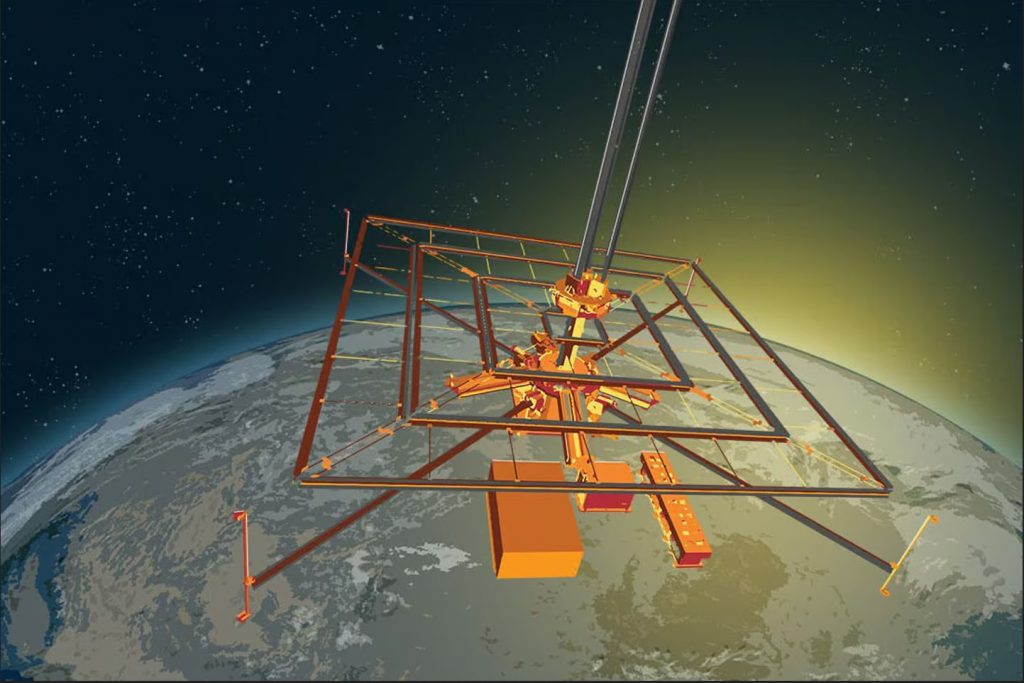A team from Caltech has achieved a significant milestone in space-based wireless power transmission. They have successfully beamed detectable levels of power from space to Earth, marking the world’s first such achievement. The Space Solar Power Project (SSPP) aims to tap into the abundant clean energy resources available in space.
Space-based solar power has the potential to address Earth’s clean energy challenges. Unlike solar panels on Earth, orbital solar setups can continuously harvest sunlight without any interference from the atmosphere or weather conditions. The solar potential in space is theoretically eight times greater per square meter compared to solar panels on Earth.
Despite facing numerous challenges, several groups are working to kickstart space-based solar power initiatives. One major challenge is the size of a usable array. The eventual size of a commercially viable space solar array could be around 3.5 square miles (9 sq km). Similarly, massive receiver arrays would be needed on Earth to capture the transmitted energy.
The Caltech team is developing a clever, ultra-lightweight, self-deploying modular array. The array consists of modules, each approximately a cubic meter in size at launch. Once deployed, these modules unfurl into large flat squares measuring around 50 meters (164 ft) per side. They feature solar cells on one side and wireless power transmitters on the other.
Space launches, however, are costly, and the economics of space-based solar power presents a significant challenge. The Levelized Cost of Energy (LCoE) is predicted to be between US$1-2 per kWh, nearly six times the retail price of electricity in the USA.
Despite the economic hurdles, the Space Solar Power Project is progressing thanks to generous donations of over US$100 million from Irvine Company chairman Donald Bren. The project has now announced the results of its first phase of orbital prototype testing.
The Space Solar Power Demonstrator (SSPD-1), weighing 50 kg (110 lbs), was sent into a low orbit on January 3 via a Momentus Vigoride spacecraft launched by SpaceX. The prototype aimed to test three systems: DOLCE module for lightweight, foldable structures, ALBA module for solar cell design effectiveness, and MAPLE module for wireless power beaming technology.
The MAPLE module successfully demonstrated the team’s ability to precisely target power beams over long distances. It conducted a short-range power-beaming demonstration where a transmitter array sent power to two nearby receiver arrays. The team achieved beam-steering through phase manipulation and constructive/destructive interference between waves, lighting up LEDs on each receiver.
“To the best of our knowledge, no one has ever demonstrated wireless energy transfer in space even with expensive rigid structures,” said Ali Hajimiri, Bren Professor of Electrical Engineering and Medical Engineering and co-director of the SSPP team. “We are doing it with flexible lightweight structures and with our own integrated circuits. This is a first.”
The MAPLE unit also beamed energy directly down to Earth through a small window, targeting a receiver unit on the roof of an engineering lab at Caltech Pasadena. The experiment confirmed the ability to detect the power beam at the ground station with the expected characteristics.
“The flexible power transmission arrays are essential to the current design of Caltech’s vision for a constellation of sail-like solar panels that unfurl once they reach orbit,” said Sergio Pellegrino, Joyce and Kent Kresa Professor of Aerospace and Civil Engineering and co-director of SSPP.
“In the same way that the internet democratized access to information, we hope that wireless energy transfer democratizes access to energy,” Hajimiri continued. “No energy transmission infrastructure will be needed on the ground to receive this power. That means we can send energy to remote regions and areas devastated by war or natural disaster.”
While the power transmitted in these tests was not significant, the results validate the team’s ability to target power beams accurately over long distances and demonstrate the equipment’s durability in space. The progress in developing space-based solar arrays is promising. Although the commercial viability of such projects faces economic challenges, it remains an intriguing endeavor to watch closely.

